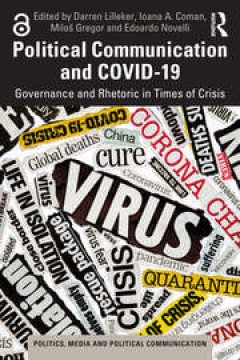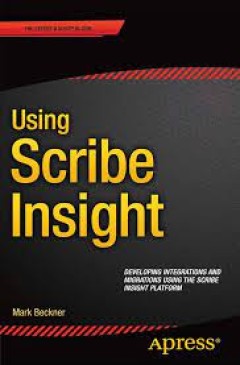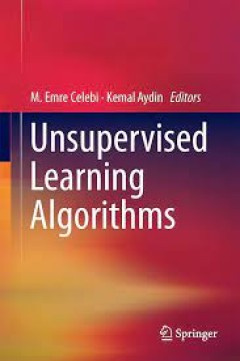Filter by

Vehicular Ad-hoc Networks for Smart Cities First International Workshop, 2014
Vehicular communication is a key technology in intelligent transportation systems. For many years now, the academic and industrial research communities have been investigating these communications in order to improve efficiency and safety of future transportation. Vehicular networking offers a wide variety of applications, including safety applications as well as infotainment applications. T…
- Edition
- -
- ISBN/ISSN
- 978-981-287-158-9
- Collation
- -
- Series Title
- -
- Call Number
- -

Political Communication and COVID-19
ABSTRACT This edited collection compares and analyses the most prominent political communicative responses to the outbreak and global spread of the COVID-19 strain of coronavirus within 27 nations across five continents and two supranational organisations: the EU and the WHO. The book encompasses the various governments’ communication of the crisis, the role played by opposition and the vibr…
- Edition
- -
- ISBN/ISSN
- -
- Collation
- -
- Series Title
- -
- Call Number
- -

A Cultural Approach to Populism
This book is a critical introduction of theorisations and research on contemporary political populism emphasising the cultural perspective. It introduces the basic theories and analyses the cultural construction of populism regarding radical democratic theory and empirical studies. Applying Ernesto Laclau’s and Chantal Mouffe’s theories, the author builds a bridge between radical democra…
- Edition
- -
- ISBN/ISSN
- -
- Collation
- -
- Series Title
- -
- Call Number
- -

Using Scribe Insight Developing Integrations and Migrations using the Scribe…
Understand how to utilize the workbench, console, adapters, publisher, and other components in Scribe to ensure you have a rapid development toolkit that will drastically reduce your workload and timeline. In Using Scribe Insight, you’ll learn to build your integrations and migrations with the minimal amount of effort, what shortcuts can be taken to simplify and reduce your labor, and what te…
- Edition
- -
- ISBN/ISSN
- 978-1-4842-1624-8
- Collation
- -
- Series Title
- -
- Call Number
- -

Unsupervised Learning Algorithms
This book summarizes the state-of-the-art in unsupervised learning. The contributors discuss how with the proliferation of massive amounts of unlabeled data, unsupervised learning algorithms, which can automatically discover interesting and useful patterns in such data, have gained popularity among researchers and practitioners. The authors outline how these algorithms have found numerous appli…
- Edition
- -
- ISBN/ISSN
- 978-3-319-24211-8
- Collation
- -
- Series Title
- -
- Call Number
- -

Arts and Humanities in Progress
The book aims to introduce a research concept called "Numanities", as one possible attempt to overcome the current scientific, social and institutional crisis of the humanities. Such crisis involves their impact on, and role within, society; their popularity among students and scholars; and their identity as producers and promoters of knowledge. The modern western world and its economic poli…
- Edition
- 1
- ISBN/ISSN
- 978-3-319-45553-2
- Collation
- Kesehatan
- Series Title
- -
- Call Number
- 613

Communication at Work : Seneca
Communication @ Work is designed to guide college students in developing the vital communication skills that are necessary to succeed in the modern workplace. It is conveniently presented in a variety of AODA-compliant formats and written in the reader-friendly style of a professional email between colleagues.
- Edition
- -
- ISBN/ISSN
- -
- Collation
- -
- Series Title
- -
- Call Number
- 302 SMI c

The Proceedings of the Third International Conference on Communications, Sign…
The Proceedings of The Third International Conference on Communications, Signal Processing and Systems provides the state-of-art developments of Communications, Signal Processing and Systems. The conference covered such topics as wireless communications, networks, systems, signal processing for communications. This book is a collection of contributions coming out of Third International Conferen…
- Edition
- 1
- ISBN/ISSN
- 978-3-319-08991-1
- Collation
- Computer
- Series Title
- Lecture Notes in Electrical Engineering
- Call Number
- 004.5

Political Communication and COVID-19
ABSTRACT This edited collection compares and analyses the most prominent political communicative responses to the outbreak and global spread of the COVID-19 strain of coronavirus within 27 nations across five continents and two supranational organisations: the EU and the WHO. The book encompasses the various governments’ communication of the crisis, the role played by opposition and the vibr…
- Edition
- -
- ISBN/ISSN
- 9781003120254
- Collation
- -
- Series Title
- -
- Call Number
- -

Global Perspectives on NGO Communication for Social Change
ABSTRACT This book examines the central role media and communication play in the activities of Non-Governmental Organizations (NGOs) around the globe, how NGOs communicate with key publics, engage stakeholders, target political actors, enable input from civil society, and create participatory opportunities. An international line-up of authors first discuss communication practices, strategie…
- Edition
- -
- ISBN/ISSN
- 9781003188636
- Collation
- -
- Series Title
- -
- Call Number
- -
 Computer Science, Information & General Works
Computer Science, Information & General Works  Philosophy & Psychology
Philosophy & Psychology  Religion
Religion  Social Sciences
Social Sciences  Language
Language  Pure Science
Pure Science  Applied Sciences
Applied Sciences  Art & Recreation
Art & Recreation  Literature
Literature  History & Geography
History & Geography